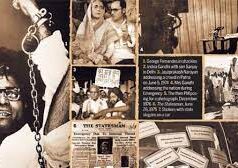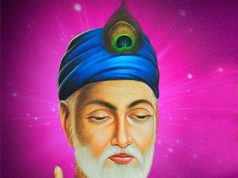
The symbolism of the ongoing nation building project is perfectly valid and the mass aesthetic that informs it entirely apt
It may have escaped the attention of the navel-gazing classes but India, that is Bharat, has had a long and abiding tryst with the cosmic trinity of Brahma-Vishnu-Mahesh, from pre-history to the present Kali Yuga. Similarly, the import of a more temporal trinity taking shape on the landscape in Gujarat, Maharashtra and Uttar Pradesh seems to have been lost in a public discourse that is focused primarily on the minutiae of the structures — height, weight, circumference et.al, — and the support/opposition to the three mega-statues of Sardar Patel, Shivaji Maharaj and Lord Ram respectively on the basis of rather obviously aligned political sympathies and/or rent-seeking purposes.
(Footnote for the pedantic: The Sardar-Shivaji-Ram trinity is termed temporal because Lord Ram is here being considered as a historical figure from 3000 BC or earlier, expressly not taking into account the widespread belief of his being the seventh Vishnu avatar and the mythology surrounding that aspect of the King of Ayodhya which of course is as valid as any other belief.)
Suffice it to say the statues of Patel near Vadodara, Shivaji of Mumbai and Ram in Ayodhya all promise to be soaring edifices symbolising impressive engineering and technological feats. More to the point, when completed, all three are likely to become symbols of a new India at the altar of which the Indian nation will most likely voluntarily genuflect — and yes, surely picnic — in the coming decades. Because the symbols of the nation that is emerging incorporate both the scale and the exuberance of the tradition of its people.
This is not to say that the extant symbols, solemn such as Rajghat or the Nehru Memorial in New Delhi or celebratory such as Rashtrapati Bhawan (justifiably co-opted by the Indian state post-Independence) are in any way less reflective of the heroes (in a gender-neutral sense) of our land or the will for remembrance of millions of Indians. But the aesthetic that informed them could certainly said to be a more genteel one and reflective of the values of the privileged few as opposed to the teeming many whose dynamism and assertion is implicit in the new symbols. And no, it’s not about being a show-off versus being modest, falsely or otherwise.
The statuary trinity of Ram-Shivaji-Patel in its conception and execution also promises, in a sense, to be the riposte of the subaltern to the dominant discourse and deracinated narrative of the inheritors of the colonial state who suppressed where they could have accommodated, demonised when they should have incorporated and deliberately ignored instead of being consciously feted. The ruling ideological dispensation too would do well to learn from the mistakes of its predecessors, because while political memory may be short, the collective national memory is most emphatically not.
Those who take recourse to the cost or money-better-spent-elsewhere argument are either being selective in their opposition or patronisingly naïve in their sermons; or perhaps the truth is they know the price of everything and the value of nothing. It concerns this writer not in the least whether the Narendra Modi-led BJP or the Rahul Gandhi-led Congress or some variant of a Third Front came up with the proposal to build the statues. But it cannot be ignored that the latter two did not. Put another way, performing fleas must put on their show and the punter will buy the ticket to the entertainment s/he is moved by in some way. This is not flippancy but mass finesse.
The usual suspects have for long elided the question of the significance to the nation-building project of these mega projects and trying to cost the intangible as they have been makes for poor mathematics and even poorer politics. The result is a nation buffeted by internecine wars of attrition within the political class that threaten to undermine the work in progress — regardless of the ruling party — of building a modern, liberal state where rule of lawis supreme whilst simultaneously reinvigorating an ancient Indic nation to ensure its secular, feminist and non-Semitic/Abrahamic best-practice traditions are reflected in the former. Such a process would, naturally, also continue to ensure as our Constitution guarantees that there is not an iota of discrimination against a single bonafide citizen of India and, equally, that there is no differential citizenship model in play whether de facto or de jure but folk multiculturalism flourishes.
To get all strands of this diverse nation together in a nation-building project of such description and magnitude will require a commitment from those at the top, regardless of political colour, that they want to change India not just rule her for a finite period of time, which is not an easy process given that’s a proposition close to an anathema foremost if not all state-power seeking political organisations.
The three mega statues, chosen for their resonance with the mass aesthetic especially strongly in the parts where they are to be located, do, however, promise to bind the whole of India in a symbolic and symbiotic bond of pride sans prejudice. In that sense they are entirely welcome and perfectly valid, even necessary, props in the nation building exercise. But mighty statues have fallen before, from Moscow to Baghdad or closer home after the British were thrown out of India, when those who installed them or their successors forgot that symbols work best when built on substantive achievements that have the welfare of the governed at their core. So, development as the meta narrative and building an Indic-values infused — not enforced — framework for it to play out in could truly unleash our meritocratic transformative potential. If the statues help in that process, it is a consummation devoutly to be wished.
For, the notion of an Indian exceptionalism is rooted in the principle that nation building or, to resort to the dictionary, “the construction or structuring a national identity using the power of the state”, and nation formation, which is the broad process through which nations come into being, are co-terminus in these parts. It was the failure to recognise this vital strand running though recorded (oral and written) history by the post-colonial Indian state that has resulted in the Nehruvian nation building project having more or less collapsed on itself. It is also the reason, and not a lack of megalomania which was expressed in tune with a different and arguably far more insidious aesthetic, why it is Sardar Patel who will tower over the Narmada Dam not Jawaharlal Nehru, why Shivaji Maharaj will look out over the Arabian Sea and not Emperor Akbar, and why it will be Lord Ram who will have the Saryu lapping his feet. Not because this is an understanding of our national impulse as some sort of dressed-up version of a sone ki chidiya revivalist fantasy, but precisely because it accepts, without self-embarrassment or being in denial,the terrible warts of our Indic heritage, the unprecedented reforms that have already taken place within and the many more yet remaining.
By Ishan Joshi
(The writer is Consultant Editor, The Pioneer.)
Courtesy: Daily Pioneer














